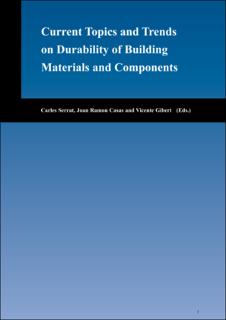Predominant Climate Exposure Strains - Thermal Degradation Testing Compared to Historical and Future Climate Scenarios
Chapter, Conference object
Published version
Permanent lenke
https://hdl.handle.net/11250/2686536Utgivelsesdato
2020Metadata
Vis full innførselSamlinger
- Publikasjoner fra CRIStin - SINTEF AS [5802]
- SINTEF Community [2248]
Sammendrag
The service life of a building or structure is often presumed to be 60 years. Products used in the building envelope are often covered by a facade material on the exterior side. Hence, the failure of these products is not easily observable, and the repair or replacement is normally not technically nor economically feasible. Thus, these products are expected to endure the entire estimated lifetime of the building. Service life prediction of these products is based on accelerated ageing tests, whose aim is to measure future possibilities of materials' durability under their expected service life. Preliminary calculations of acceleration factors are discussed and related to historical and future climate scenarios for a dataset from Calgary, Canada. The changes in temperature threshold values for this dataset is significant. Relating the measured values to a duration of a typical accelerated durability test indicates that the test duration is sufficient for a service life of 102 years according to historical climate, but only 52 years taking into account an assumed climate change.
